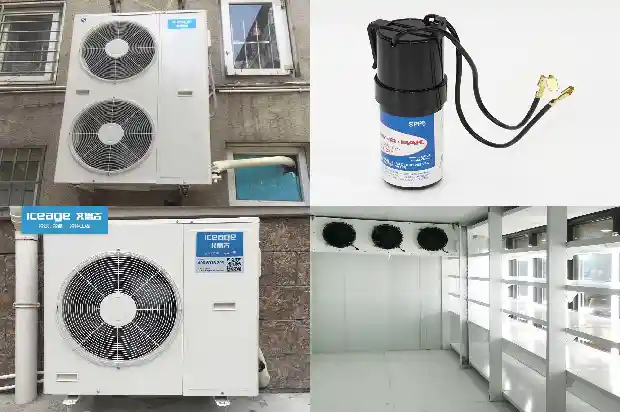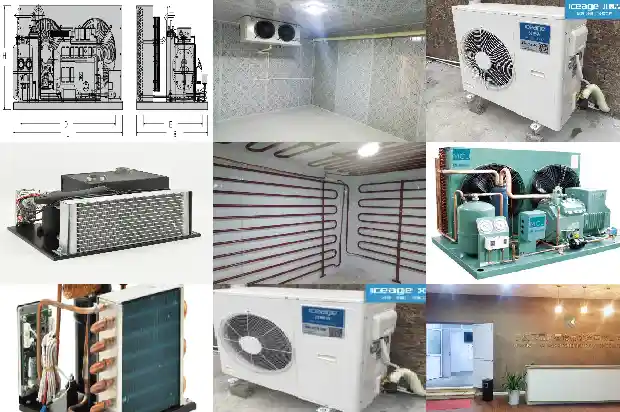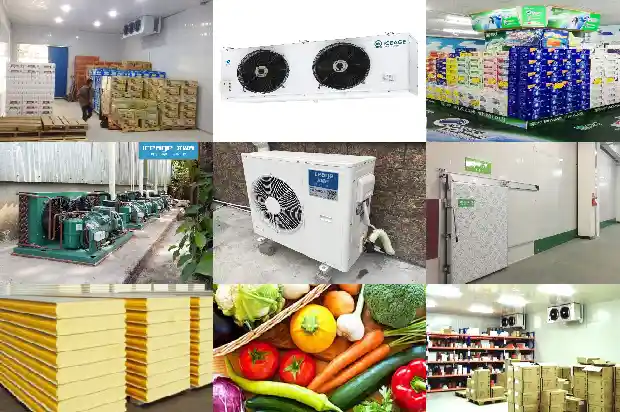Common Faults and Solutions in Cold Storage Maintenance
2025-03-16
- During the initial operation of the cold storage equipment unit
During the initial operation of the cold storage equipment unit, constantly observe the oil level of the compressor, the oil return situation, and the cleanliness of the oil. If the oil is found to be dirty or the oil level drops, solve the problem in a timely manner to avoid poor lubrication. - Frequently observe the operating state of the compressor, the heart of the cold storage equipment
Check its exhaust temperature. When operating in different seasons, pay special attention to the operating state of the system, and adjust the liquid supply amount of the system and the condensing temperature in a timely manner. - The unit does not start for a long time, keeps running without stopping for a long time, or stops before the cold storage temperature is reached
Check if there is dirt on the condenser. Poor heat dissipation can cause the condensing pressure of the refrigeration machine to be too high. To protect the compressor, the machine stops running under the action of the pressure controller. After the heat dissipation is good, press the black reset button on the pressure controller, and the machine can automatically resume operation. - Usually, observe the operating state of the compressor through methods such as observing the changes of instruments, listening to the running sound of the machine, and feeling the temperature change of the machine
If phenomena such as gas leakage in the compressor are found, repair or replace it in a timely manner. - The cold storage has poor heat insulation or sealing performance, resulting in large cold loss
Poor heat insulation performance of the cold storage is due to insufficient thickness of the insulation layer of pipelines, cold storage insulation walls, etc., resulting in poor heat insulation and heat preservation effects. This is mainly caused by inappropriate selection of the insulation layer thickness during design or poor quality of the insulation material during construction. Or the heat - insulating and moisture - proof performance of the insulation material may be damaged, causing the insulation layer to get damp, deform, and even rot. Its heat - insulating and heat - preservation ability decreases, and the cold loss of the cold storage increases accordingly, and the cold storage temperature drops significantly more slowly.
- The surface of the cold storage evaporator is covered with too thick frost or too much dust, reducing the heat transfer effect
To prevent the surface frost layer of the evaporator from being too thick, defrost it regularly. In addition to the thick frost layer leading to poor heat transfer of the evaporator, if the surface of the evaporator is covered with too much dust due to long - term non - cleaning, its heat transfer efficiency will also decrease significantly. - There is too much air or refrigeration oil in the evaporator, reducing the heat transfer effect
Once the inner surface of the heat - transfer tube of the evaporator is attached with too much refrigeration oil, its heat - transfer coefficient will decrease. Similarly, if there is too much air in the heat - transfer tube, the heat - transfer area of the evaporator decreases, and its heat - transfer efficiency will also decrease significantly, and the rate of the cold storage temperature drop will slow down accordingly. - The throttle valve of the cold storage is improperly adjusted or blocked, and the refrigerant flow rate is too large or too small
Improper adjustment or blockage of the throttle valve will directly affect the refrigerant flow rate entering the evaporator. When the opening degree of the throttle valve is too large, the refrigerant flow rate is on the high side, and the evaporation pressure and evaporation temperature also increase. At the same time, when the opening degree of the throttle valve is too small or blocked, the refrigerant flow rate decreases, and the refrigeration capacity of the system also decreases.
Generally, it can be judged whether the refrigerant flow rate of the throttle valve is appropriate by observing the evaporation pressure, evaporation temperature, and the frosting situation of the suction pipe.
Blockage of the throttle valve is an important factor affecting the refrigerant flow rate. The main reasons for the blockage of the throttle valve are ice blockage and dirt blockage. Ice blockage occurs because the drying effect of the dryer is not good, and the refrigerant contains moisture. When flowing through the throttle valve, the temperature drops below 0 °C, and the moisture in the refrigerant freezes into ice and blocks the throttle valve hole. Dirt blockage is due to the accumulation of a large amount of dirt on the filter screen at the inlet of the throttle valve, resulting in poor refrigerant flow and blockage.
- The amount of refrigerant in the cold storage system is insufficient, and the refrigeration capacity is insufficient
There are mainly two reasons for the insufficient refrigerant circulation in the cold storage. One is that the refrigerant charge is insufficient.
In this case, only sufficient refrigerant needs to be replenished. The other reason is that there is a relatively large refrigerant leakage in the system. In case of this situation, first find the leakage point, focus on checking the joints of each pipeline and valve. After finding and repairing the leakage part, recharge sufficient refrigerant.
- The efficiency of the compressor is low, and the refrigeration capacity cannot meet the load requirements of the cold storage
Due to long - term operation of the compressor, components such as the cylinder liner and piston rings are severely worn, the clearance between them increases, the sealing performance will decline accordingly, and the volumetric efficiency of the compressor also decreases, resulting in a reduction in the refrigeration capacity. The refrigeration capacity of the compressor can be roughly judged by observing the suction and discharge pressures of the compressor. If the refrigeration capacity of the compressor decreases, the common method is to replace the cylinder liner and piston rings of the compressor. If it still doesn't work after replacement, other factors should be considered, and even the machine may need to be disassembled for inspection.
Related Articles
- Common Faults and Treatment Methods of Single-phase Asynchronous Motors
- Common Faults and Daily Maintenance of Commercial Ice Makers
- Analysis of Common Faults of Chillers
- Wiring Methods, Faults and Classifications of Fan Coil Units, All Here~~
- Eliminate the "Blockage" Faults (Ice Blockage, Dirt Blockage, Oil Blockage) of the Refrigeration System in 5 Minutes
- How to Inspect and Troubleshoot the Faults of the Control Valve in the Cold Storage?
- Common Faults in Refrigeration Systems and Handling Methods
- What Are the Common Causes of High - pressure Faults in Chillers?
- Basic Faults and Preventive Maintenance of Water - cooled Units
- Composition and Common Faults of Screw Refrigeration Compressors
- Common Faults and Solutions of Central Air - conditioning Chiller Units
- Common Faults of Industrial Chillers
- Common Faults and Corresponding Solutions of Chillers During Use
- Analysis and Troubleshooting of Common Faults in Air - source Heat Pumps
- Maintenance Methods for Faults in Screw Refrigeration Air - conditioner Compressors
- Common Faults and Troubleshooting Methods of the Moving Mechanism of Piston Compressors
- Analysis of Common Faults in Compressor Overcurrent and Burnout
- What are the reasons for the inactivity of the automotive air conditioning compressor? What are the common faults?
